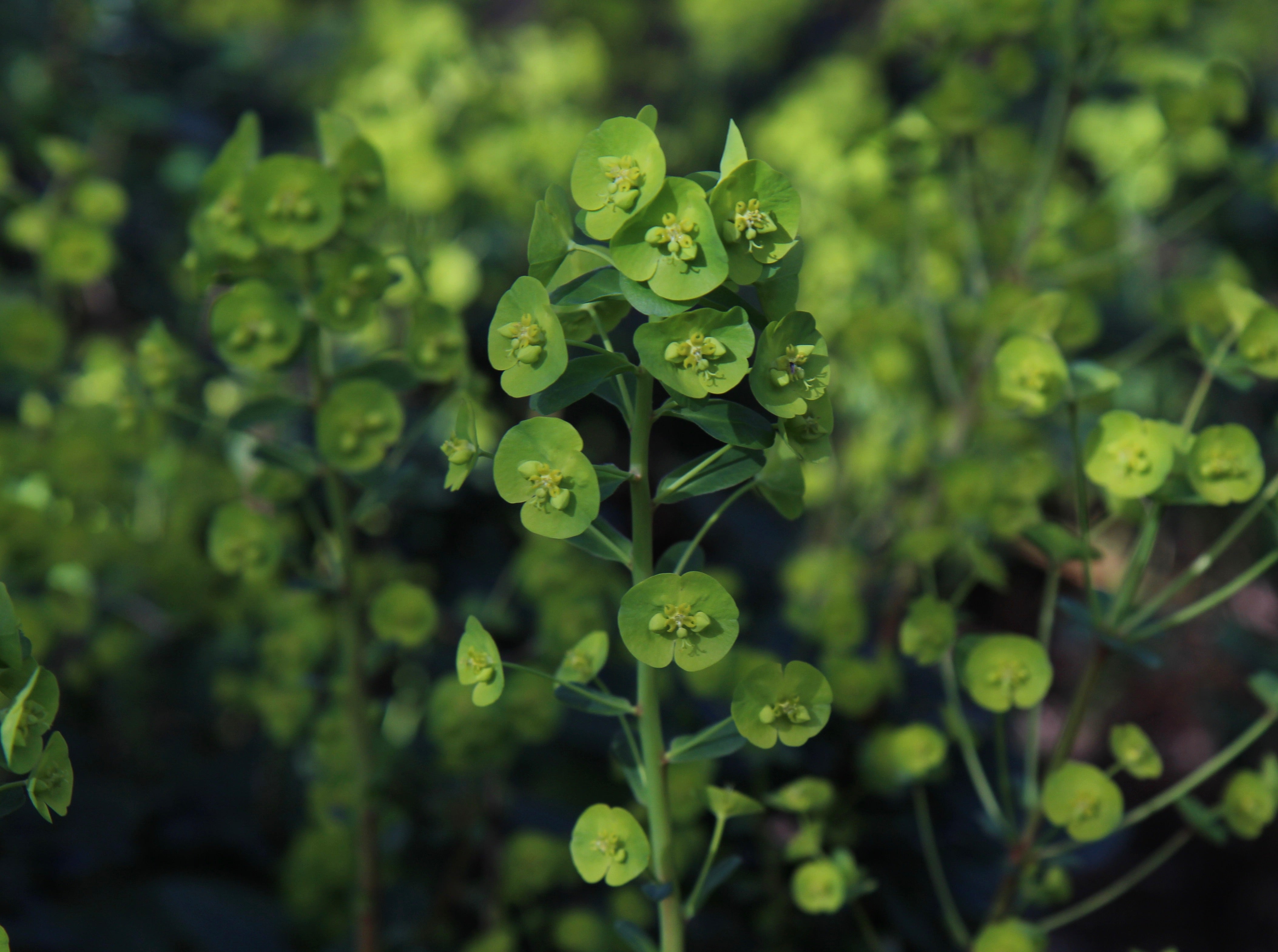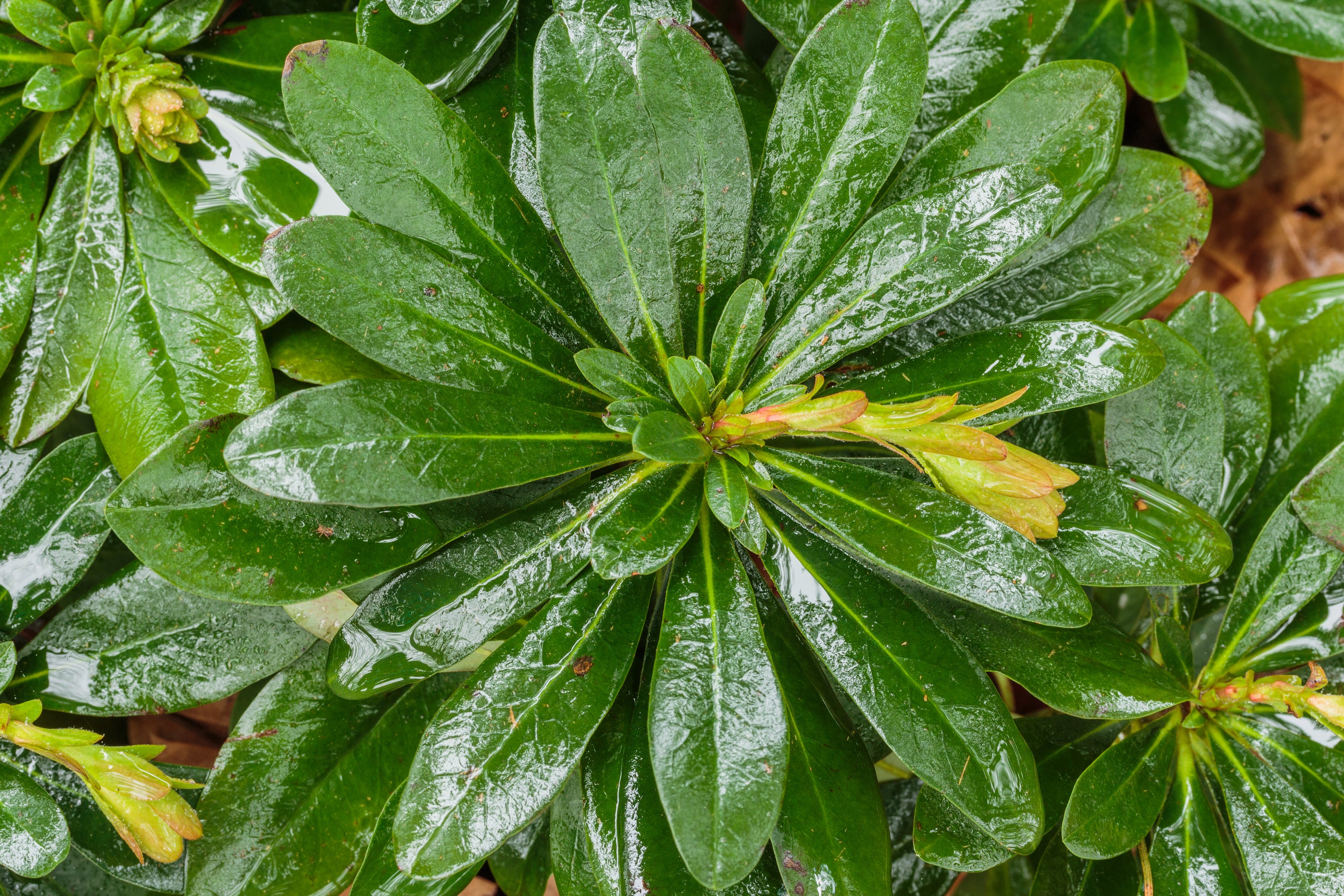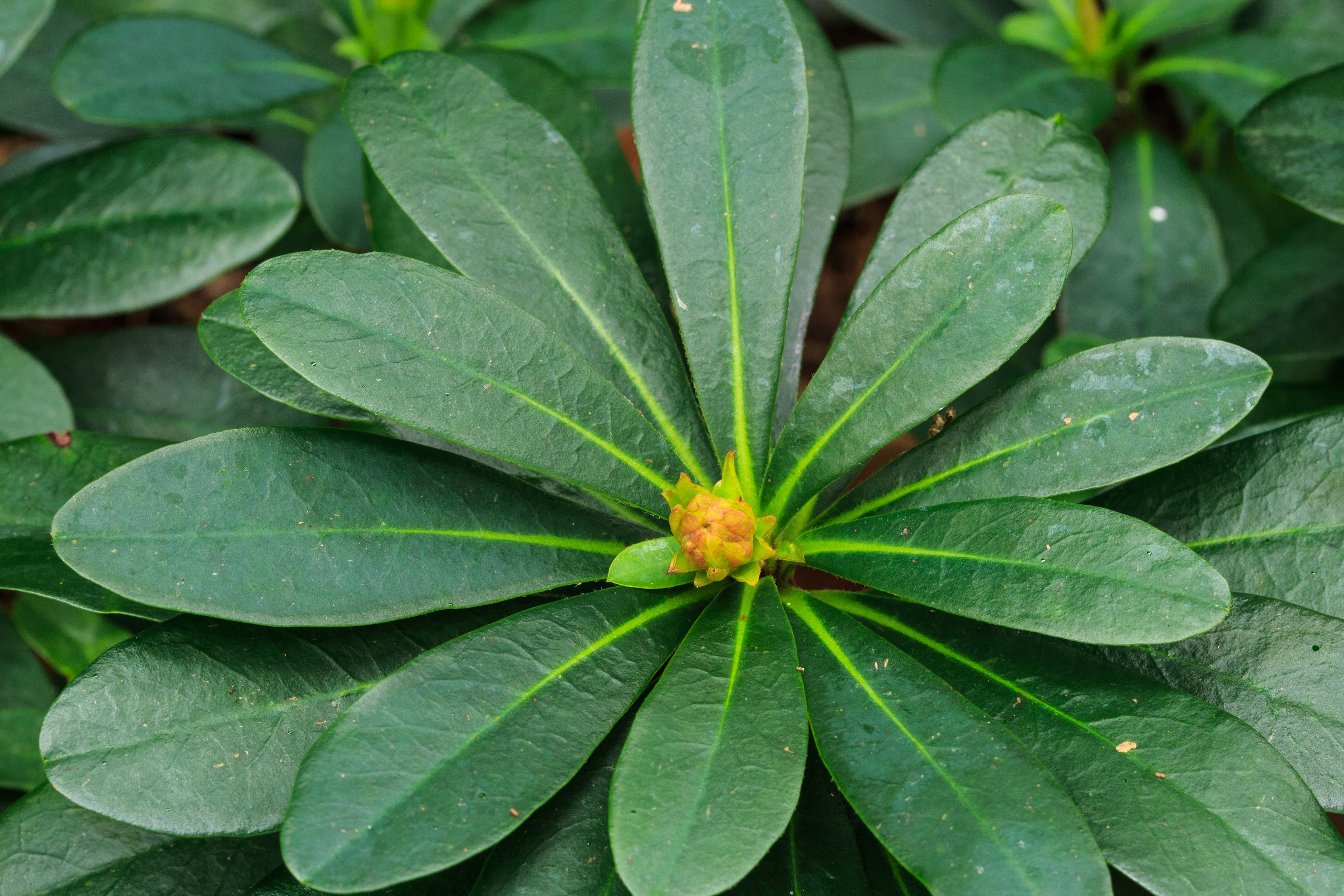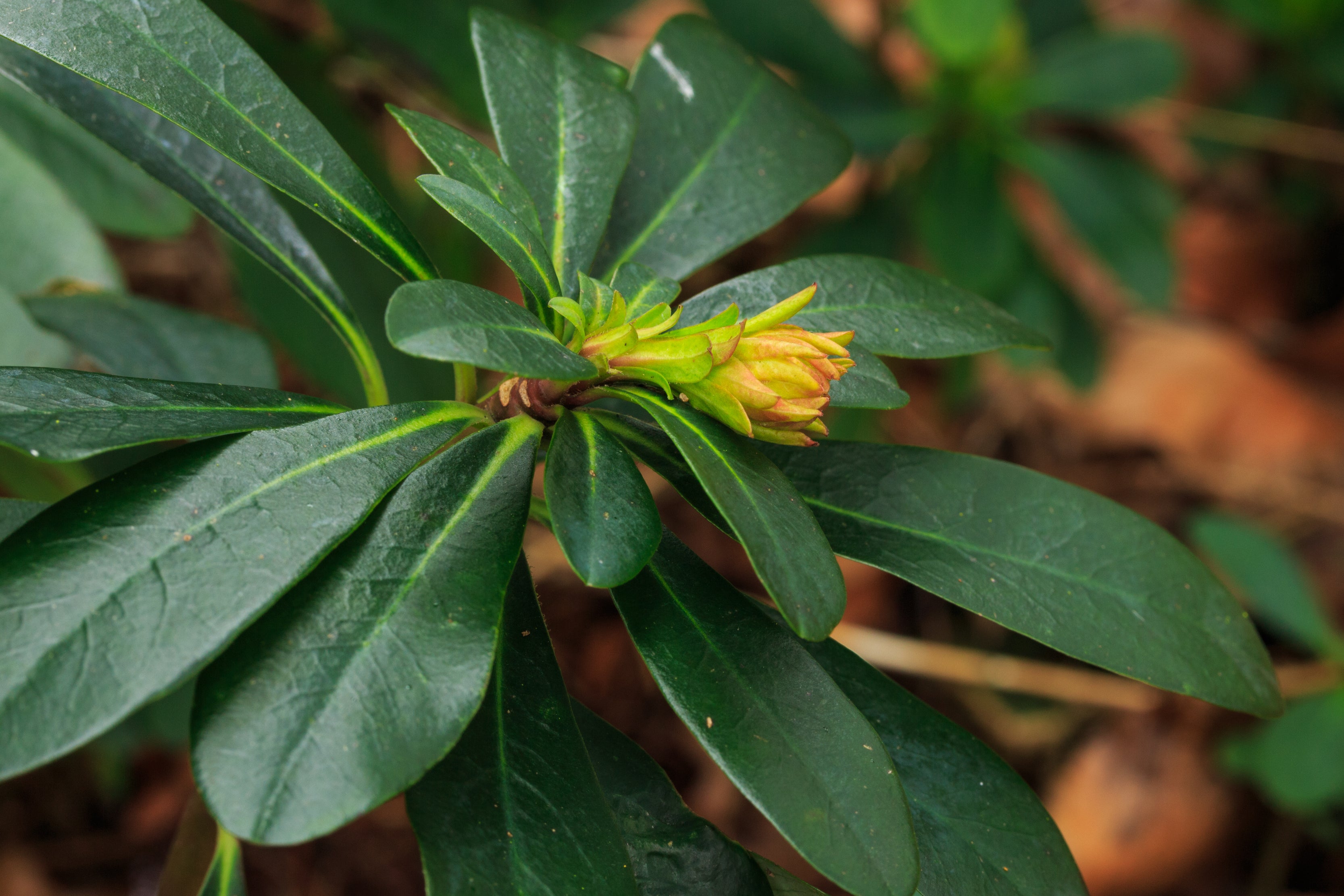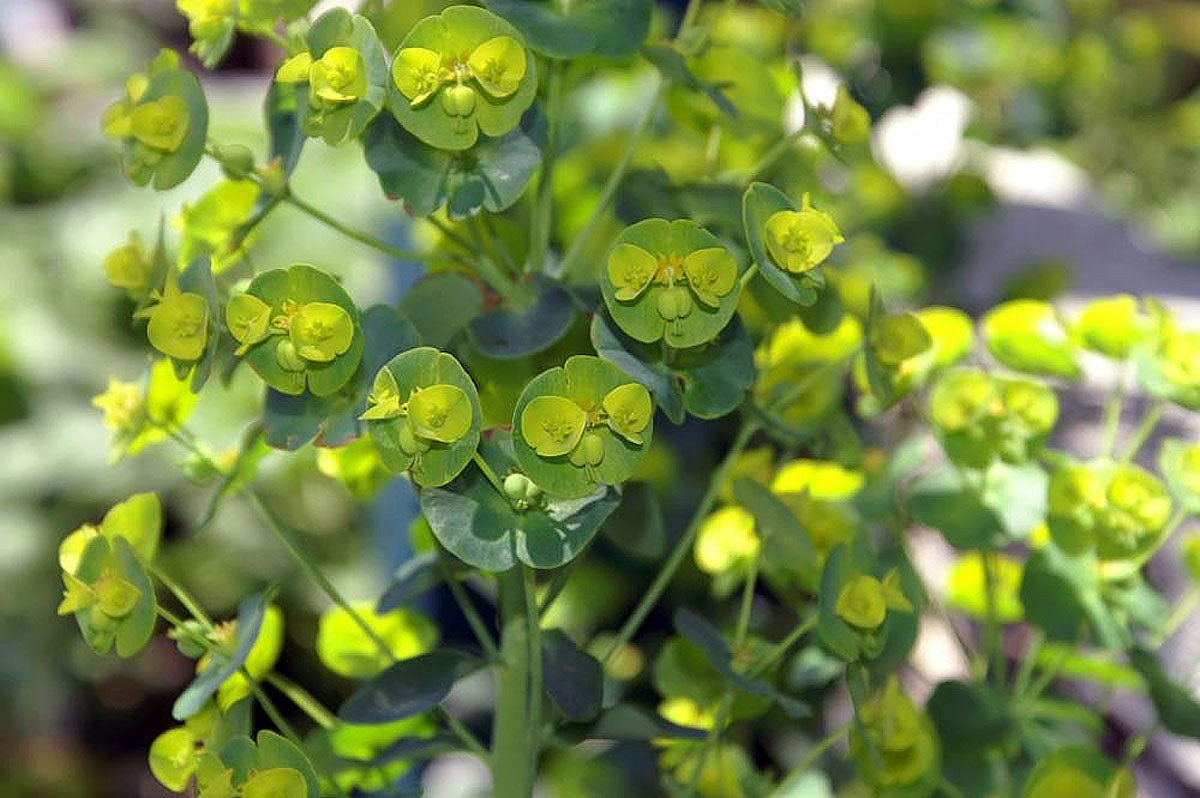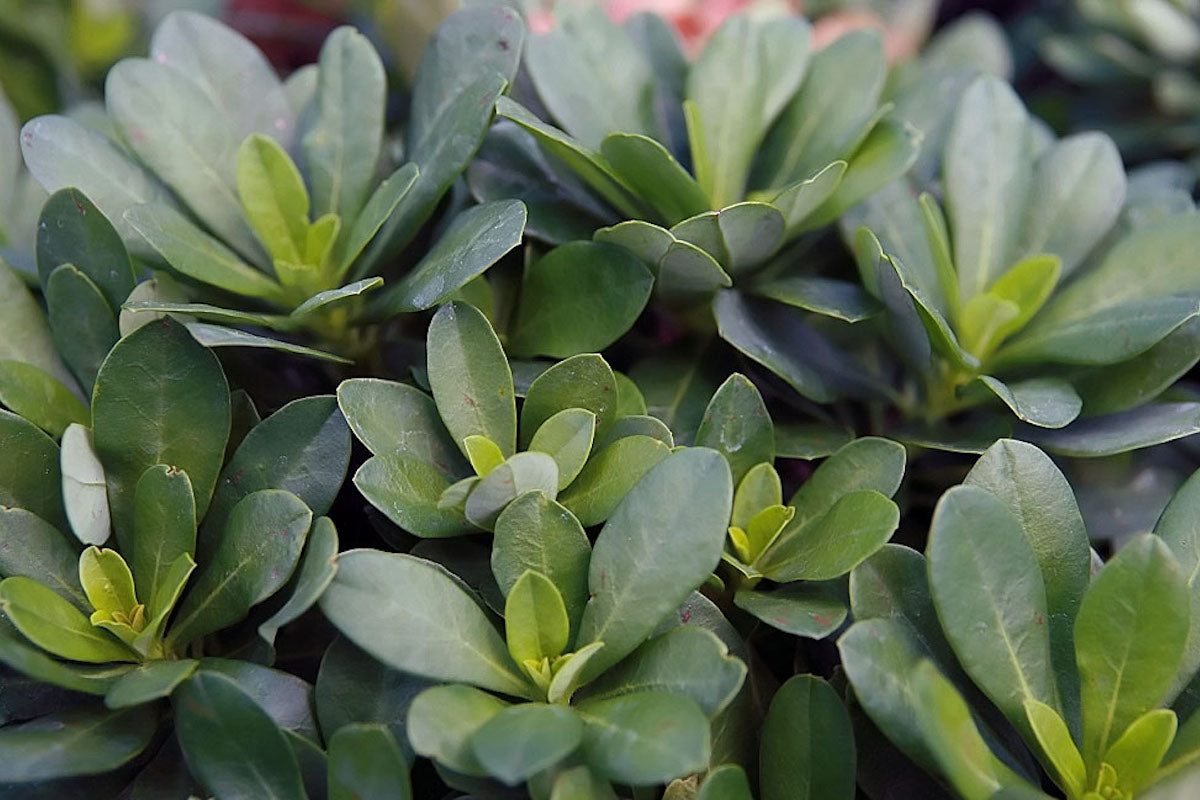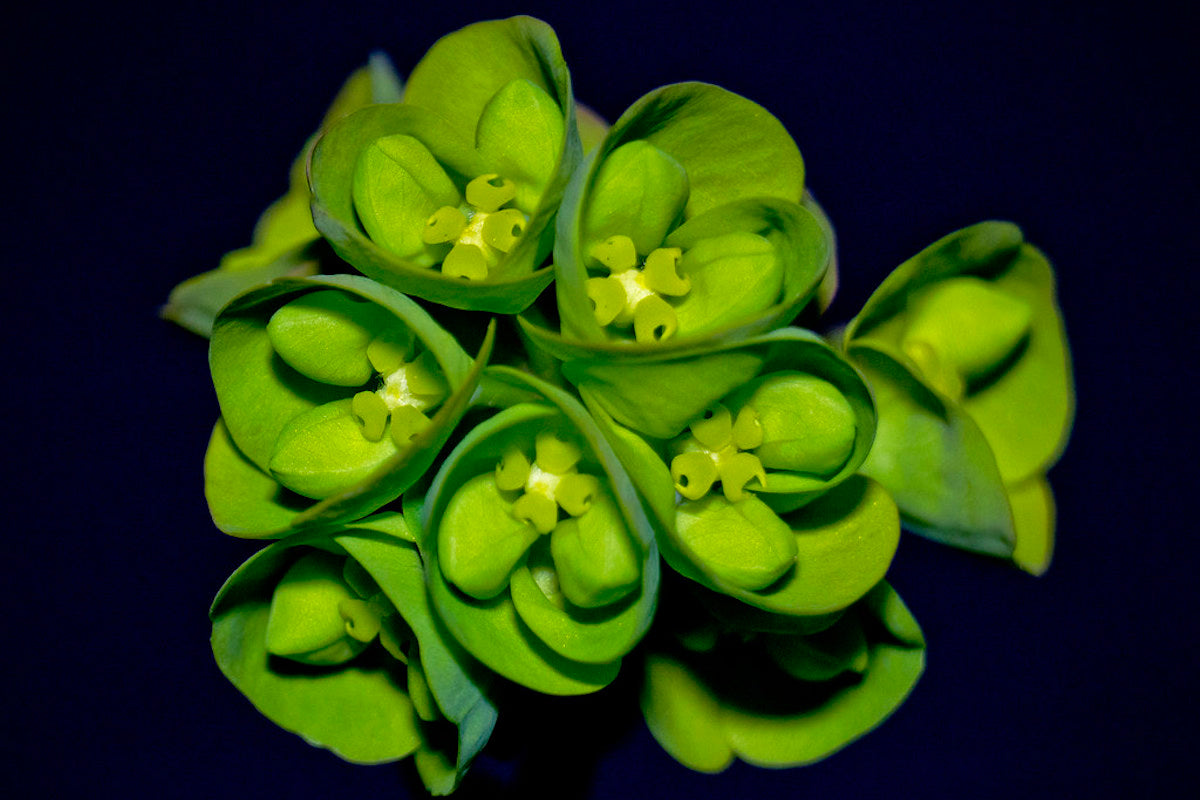Euphorbia amygdaloides var. robbiae
Approx. 0.5 litre pot
About this cultivar:
Euphorbia amygdaloides var. robbiae is a spreading evergreen perennial, forming colonies of rosettes of oblong, dark green leaves from which, in early spring, the yellow-green flowers unfurl in dramatic fashion, presenting stalks of flowers that last for months. The flower then dry out to create a lovely structural effect. Watch out! It will self seed if you let it! Has the Royal Horticultural Society Award of Garden Merit.
The variation robbiae, commonly known as Mrs Robb’s hatbox, is distinguished from the species amygdaloide by having broader, dark green leaves in rosettes with a more rapid rhizomatous spread. The slightly stoloniferous (running/rhizomatous) nature of robbiae makes it a good choice for an evergreen groundcover in a difficult and very shady site, but it will grow in most places.
The variation and common names are in reference to plant collector and botanist Mary Ann Robb (1829-1912) who discovered this plant in a woodland area near Istanbul, Turkey and brought some cuttings and seeds back to her garden in Liphook, Hampshire in a hat box in 1891.
The specific epithet comes from the Latin word amygdalinus meaning almond-like.
- Position: Full sun, partial shade
- Soil: Almost any soil, grows well in Ballyrobert
- Flowers: May, June, July, August
- Other features: Grows well in Ballyrobert, Royal Horticultural Society Award of Garden Merit (RHS AGM)
- Hardiness: H6 - Hardy in all of UK and northern Europe (-20 to -15°C), Fully hardy - grows well in Ballyrobert!
- Habit: Clump forming, suckering
- Foliage: Evergreen
- Height: 30 - 45 cm (1 - 1.5 ft)
- Spread: 30 - 45 cm (1 - 1.5 ft)
- Time to full growth: 2 to 5 years
- Plant type: Herbaceous Perennial
- Colour: Green, yellow
- Goes well with: Iris, Tulipa, Allium, Lupin and with foliage plants such as Cotinus.
About this genus:
Euphorbia (spurge) is a large and diverse genus of over 2000 (!!) species of flowering plants in the spurge family (Euphorbiaceae). The common name "spurge" derives from the Middle English/Old French espurge ("to purge"), due to the use of the plant's sap as a purgative. The botanical name Euphorbia (pronounced "u-for-be-a") derives from Euphorbos, the Greek physician of king Juba II of Numidia (52–50 BC – 23 AD), who married the daughter of Anthony and Cleopatra (imagine those in-laws!). A philosopher-king, Juba was a prolific writer on various subjects, including natural history. In 12 B.C. Juba named this plant after his doctor Euphorbos. In 1753, Botanist and taxonomist Carl Linnaeus assigned the name Euphorbia to the entire genus in the physician's honor! Phew!
Depending on the cultivar, Euphorbia grow almost anywhere that is not too extreme; we have them everywhere in our garden at Ballyrobert. In the garden Euphorbia is prized for its unique flower heads, textural foliage, and wonderful garden structure. Many new perennial Euphorbia cultivars feature leaves that vary from green to yellow to blue-green to powder blue to purple and some are even variegated or splashed with colour. The flowers attract butterflies and all sorts of creepy crawlies; truely a garden essential!
Try them with Iris, Tulipa, Allium, Lupin and with foliage plants such as Cotinus.

